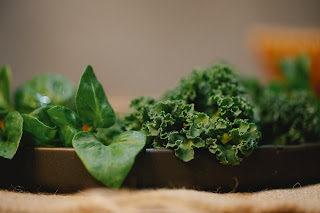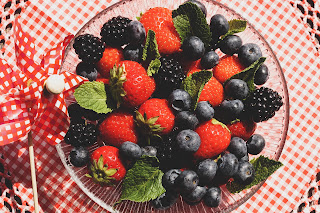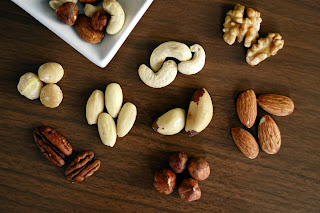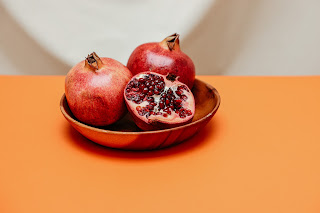The content on this website – including articles, event announcements, personal experiences, and recommendations – is for informational and educational purposes only and is not medical advice. Always consult a qualified healthcare professional before making any changes to your diet, exercise, supplements, sleep habits, or wellness routines, especially if you are pregnant, nursing, on medication, or have any medical condition.
Nitric Oxide Foods: Benefits and Top Sources
Nitric oxide (NO) is a naturally occurring molecule in the human body that plays a vital role in many physiological processes, including blood pressure regulation, immune function, and the health of the cardiovascular system. NO is also involved in the regulation of blood flow, which makes it a crucial molecule for maintaining overall health and wellness. In this article, we will explore the benefits of nitric oxide, the foods that are rich in NO-boosting compounds, and how you can include these foods in your diet.
What is Nitric Oxide?
Nitric oxide (NO) is a gas molecule produced by the human body that acts as a signaling molecule, transmitting information between cells. It has been found to have many beneficial effects on the body, including:
- Regulating blood pressure
- Improving blood flow
- Supporting healthy blood vessel function
- Supporting a healthy immune response
- Promoting healthy cellular function
Why is Nitric Oxide Important?
The health benefits of nitric oxide are numerous, and it is considered to be an essential molecule for overall health and wellness. NO is involved in the regulation of blood pressure, and studies have shown that increasing nitric oxide levels can help to lower blood pressure. This is because NO acts as a vasodilator, relaxing the walls of blood vessels and increasing blood flow. This, in turn, helps to reduce the strain on the heart and blood vessels, which can lead to a reduction in blood pressure.
NO is also important for the health of the cardiovascular system. It supports healthy blood vessel function, helps to reduce the risk of heart disease, and promotes healthy cellular function. This is because NO acts as a signaling molecule, transmitting information between cells and supporting healthy cellular function.
Benefits of Nitric Oxide Foods
There are many benefits to incorporating nitric oxide-rich foods into your diet. Some of the benefits of these foods include:
Supporting healthy blood pressure levels:
Nitric oxide is known to help dilate blood vessels, which can help lower blood pressure levels. By incorporating nitric oxide-rich foods into your diet, you can support healthy blood pressure levels and reduce your risk of heart disease and stroke.
Supporting healthy blood vessel function:
Nitric oxide plays a crucial role in maintaining the health and function of blood vessels. By eating nitric oxide-rich foods, you can help improve blood vessel function and reduce your risk of developing conditions such as atherosclerosis, which is a buildup of plaque in the blood vessels.
Supporting healthy cardiovascular health:
Nitric oxide has been shown to support healthy cardiovascular health by improving blood flow, reducing oxidative stress, and supporting healthy blood vessel function. By incorporating nitric oxide-rich foods into your diet, you can help reduce your risk of developing heart disease and improve your overall cardiovascular health.
Improving blood flow:
Nitric oxide helps dilate blood vessels, which can improve blood flow throughout the body. This improved blood flow can help deliver essential nutrients and oxygen to the cells and organs, supporting overall health and wellness.
Supporting a healthy immune response:
Nitric oxide has been shown to play a role in the immune system, helping to fight off harmful pathogens and support overall immune health. By incorporating nitric oxide-rich foods into your diet, you can help support your immune system and reduce your risk of illness and infection.
It's important to note that while nitric oxide-rich foods can provide many benefits, they should be incorporated as part of a balanced diet that includes a variety of nutrient-rich foods. Consult with a healthcare professional before making any significant changes to your diet.
Top Nitric Oxide Foods
There are many foods that are rich in compounds that help to boost nitric oxide levels in the body. Some of the top nitric oxide foods include:
· Leafy Greens
Leafy greens, such as spinach, kale, and Swiss chard, are one of the most nutritious and versatile foods that you can add to your diet. These greens are rich in nitrates, which are precursors to nitric oxide. When consumed, nitrates are converted into nitric oxide in the body, which helps to boost overall nitric oxide levels. Leafy greens are also a good source of vitamins and minerals, such as vitamin C, iron, and calcium. Adding a handful of leafy greens to your smoothies, salads, or soups can be an easy and delicious way to boost your nitric oxide levels.
·
Beets
Beets are another excellent source of nitrates and are one of the top nitric oxide foods. They contain high levels of nitrates, which are converted into nitric oxide in the body. Beets are also a good source of fiber, antioxidants, and essential vitamins and minerals. Roasting or steaming beets is a simple and delicious way to include them in your diet.
·
Berries
Berries, such as strawberries, raspberries, and blackberries, are another great source of nitric oxide-boosting compounds. Berries contain high levels of antioxidants and are a good source of vitamin C. Adding berries to your smoothies, oatmeal, or yogurt can be a tasty way to incorporate more nitric oxide-rich foods into your diet.
·
Nuts and Seeds
Nuts and seeds, such as almonds, pumpkin seeds, and sesame seeds, are a good source of healthy unsaturated fats, fiber, and protein. These foods also contain high levels of L-arginine, an amino acid that is converted into nitric oxide in the body. Snacking on a handful of almonds or pumpkin seeds can be a great way to boost your nitric oxide levels.
·
Citrus Fruits
Citrus fruits, such as oranges, lemons, and limes, are another excellent source of nitric oxide-boosting compounds. These fruits are rich in vitamin C, which is essential for nitric oxide synthesis in the body. Squeezing fresh lemon or lime juice into water or tea, or adding orange slices to your smoothie can be a delicious way to increase your nitric oxide intake.
·
Pomegranate
Pomegranate is a fruit that is rich in antioxidants and polyphenols, which are compounds that can help to increase nitric oxide levels in the body. Pomegranate is also a good source of vitamin C and potassium. Drinking pomegranate juice, or adding pomegranate seeds to your smoothies or salads, can be a delicious way to boost your nitric oxide levels.
In conclusion, incorporating nitric oxide-rich foods into your diet is an easy and delicious way to support healthy nitric oxide levels , healthy blood pressure levels, blood vessel function, cardiovascular health, blood flow, and immune response, which can all contribute to overall health and wellness. So, start adding more leafy greens, beets, berries, nuts and seeds, citrus fruits, and pomegranate to your diet today and reap the benefits of increased nitric oxide levels.
How to Include Nitric Oxide Foods in Your Diet
Incorporating nitric oxide-rich foods into your diet is easy and delicious. Here are a few tips on how to include these foods in your meals:
- Add spinach, kale, or other leafy greens to smoothies or salads.
- Roast beets and add them to salads or as a side dish.
- Snack on a handful of almonds or pumpkin seeds.
- Add berries to yogurt or oatmeal.
- Squeeze fresh lemon or lime juice into water or tea.
Daily Intake Of Nitric Oxide Foods in Your Diet
Leafy greens -
Beets -
Berries -
Nuts and seeds -
Citrus fruits -
Pomegranate -
It's important to note that these recommended daily intakes are just general guidelines and may vary depending on your individual needs and health conditions. It's always best to consult with a healthcare professional before making any significant changes to your diet.
Conclusion
Nitric oxide is a vital molecule that plays a key role in many physiological processes, including blood pressure regulation, immune function, and cardiovascular health. Incorporating nitric oxide-rich foods into your diet can help to support healthy nitric oxide levels and improve overall health and wellness. Leafy greens, beets, berries, nuts and seeds, citrus fruits, and pomegranate are some of the top nitric oxide foods that you can include in your diet. Whether you add spinach to your smoothies, snack on almonds, or squeeze fresh lemon juice into your water, incorporating nitric oxide-rich foods into your diet is easy and delicious. By doing so, you can help to support healthy blood pressure levels, blood vessel function, cardiovascular health, blood flow, and immune response, which can all contribute to overall health and wellness.
FAQs : Nitric Oxide Foods: Benefits and Top Sources
- What
is nitric oxide?
Nitric oxide (NO) is a naturally occurring molecule in the human body that acts as a signaling molecule and has many beneficial effects on the body, including regulating blood pressure, improving blood flow, supporting healthy blood vessel function, and promoting healthy cellular function. - Why is
nitric oxide important?
Nitric oxide is considered to be an essential molecule for overall health and wellness. It is involved in the regulation of blood pressure, supports healthy blood vessel function, and helps to reduce the risk of heart disease. - What
are the benefits of nitric oxide-rich foods?
Incorporating nitric oxide-rich foods into your diet can support healthy blood pressure levels, blood vessel function, cardiovascular health, blood flow, and immune response, which can all contribute to overall health and wellness. - What
are the top nitric oxide foods?
Leafy greens, beets, berries, nuts and seeds, citrus fruits, and pomegranate are some of the top nitric oxide foods that you can include in your diet. - How
can I include nitric oxide foods in my diet?
Incorporating nitric oxide-rich foods into your diet is easy and delicious. You can add spinach, kale, or other leafy greens to smoothies or salads, roast beets, snack on nuts and seeds, add berries to yogurt or oatmeal, or squeeze fresh lemon or lime juice into water or tea.

.png)








.png)

.png)
